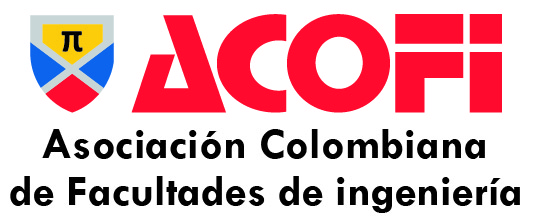Fungicide from sisal juice (Furcraea spp.) and evaluation of its effectiveness on the drop (Phytopthora infestans) in the potato crop (Solanum tuberosum)
DOI:
https://doi.org/10.26507/rei.v7n13.162Keywords:
Phytophthora infestans, Furcraea spp, fique juice, compound bioactives, potato cultivation, Solanum tuberosum, biofungicideAbstract
Fique (Furcraea spp) is cultivated thoroughly in Colombia in areas with temperatures between 19ºC and 23ºC. Only 4% of fique is used to obtain fiber (cabuya). The 96% remaining is thrown to be discarded to the environment without any treatment. This produces severe contamination problems. 70% of the wastes (96% everything) are liquids (fique).
To demonstrate the biocide potential of the fique juice, effect was evaluated on Phytophthora infestans fungus, which causes “gota” in potato (Solanum tuberosum). In this work, the presence of flavonoids, saponins and alkaloids were determined in the fique juice. Then a biofungicide with six months of duration was elaborated. Its effectivity was evaluated against the “gota” of the potato. A Completely Random Design (CRD) was used with treatment at different concentrations (3.25%, 7.50% and 11.25% of biofungicide). Its effect was compared with a commercial fungicide (Manzate) and witness treatment, without fungicide. The percentage of incidence of the illness was the variable answer. According to the variance analysis, there is not statistically significant difference between the level of effectiveness of not Manzate fungicide and 7.5% and 11.25% concentrations of biofungicide. According to the results the fique juice can be useful as biofungicide in the control of potato’s gota because of the protector effect on Phytophthora Infestans fungus. It is possible that this effect is due to the presence of saponins, alkaloids and flavonoids.
Downloads
References
Acevedo, J. y Serna, E. (2005). Optimización del proceso de extracción de material orgánico procedente de fique (Furcraea spp.) y observación del efecto biofungicida. Memorias de la IX Jornada de Investigación, Universidad Pontificia Bolivariana, Medellín, Colombia.
Apablaza, G., Díaz, M.J., San Martin, R. y Moya, E. (2002). Control de oidio de las cucurbitaceas con saponinas presentes en extractos de quillay (Quillaja saponaria). Ciencia e Investigación Agraria, 29(2), 83-90.
Arias, G. y Cano, D. (1996). Evaluación de propiedades insecticidas del jugo de fique. Tesis presentada en la Universidad Nacional de Colombia, sede Medellín, para optar el grado de Ingeniero Agrónomo, Medellín, Colombia.
Barbosa, E. S. (2002). Evaluación de la calidad del jugo de fique en la obtención de hecogenina y análisis fitoquímico del extracto heptánico del jugo hidrolizado de Furcraea macrophylla, variedad negra común. Tesis presentada en la Universidad Nacional de Colombia, sede Bogotá, para optar al grado de Químico, Bogotá, Colombia.
Bernald, A.A., Zamora, J.F., Calleros, G.V., y Nuño, R.R. (2005). Actividad biológica in vitro de extractos de Lupinos spp. Sobre hongos fitopatógenos. Revista Mexicana de Fitopatología, 23(2), 139-146.
De la Cuadra, C., Tello, J. C., Muzquiz, M., y Calvo R. (1994). Poder fungicida in vitro de esparteína y gramina, alcaloides del Lupino amargo. Studia Botánica, 13, 99-101.
Domínguez, X.A. (1976). Métodos de investigación fitoquímica. Centro Regional de Ayuda Técnica. México: Gráfica Panamericana.
Douglas, S.A., Donal, W. M., Casassas, S. E. (1970). Introducción a la química analítica. España: Reverté (Ed).
O’Farrill N. H. (2004). Insecticidas Ecológicos. Portal del Servicio de Extensión Agrícola. Puerto Rico: Universidad de Puerto Rico.
Gómez, Jorge E. (2001). Evaluación del extracto de fique en el desarrollo invitro de Colletotrichum gloeosporioides (Penz) Sacc., y Sclerotinia sclerotiorum (Lib.) de Bary. Popayán: Corpoica.
Niño, J., Ospina, J., Correa Y., y Mosquera, O. (2007). Determinación de la actividad antifúngica de extractos vegetales sobre el hongo Mycosphaerella fijiensis morelet, Scientia et Technica, 8(33), 425-426.
Ruiz, P. y Poveda, O. (1995). Flavonoides del género (Lamiaceae) por HPLC. Tesis para optar el grado de Doctor en Farmacia. Madrid: Universidad Complutense de Madrid.
Segura, R. (2004). Estudio de factibilidad para el montaje de una planta experimental de producción de hecogenina a partir de los jugos de fique en el Municipio de El Tambo Nariño. Universidad Nacional de Colombia.
Downloads
Published
How to Cite
Issue
Section
License
Total or partial reproduction of the documents published in the journal is authorized only when the source and author are cited.
| Article metrics | |
|---|---|
| Abstract views | |
| Galley vies | |
| PDF Views | |
| HTML views | |
| Other views | |









